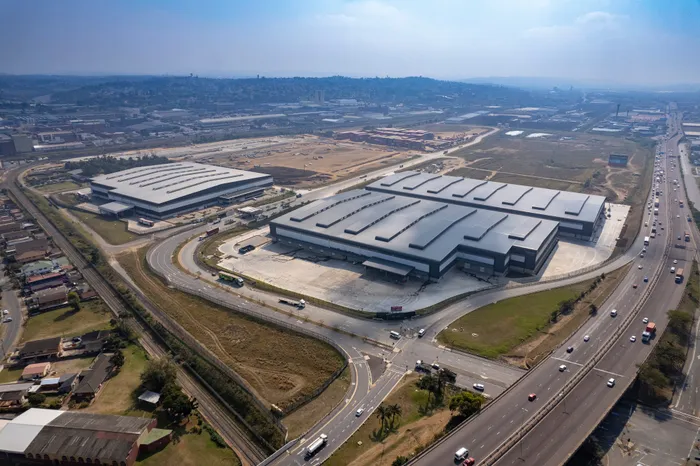Strong demand for new large logistics property developments still evident

Logistics property development, which had already grown well over a decade due to the growing global economy and impact this has had on imports, exports, and retailers in South Africa, gained momentum during the pandemic. Picture: Supplied
Logistics property development, which had already grown well over a decade due to the growing global economy and impact this has had on imports, exports, and retailers in South Africa, gained momentum during the pandemic, and there is a shortage of bigger developments.
A research report released by JLL, a professional services firm that specialises in real estate and investment management, found that global supply chain disruption during the pandemic forced retailers and courier services to reconsider procurement, storage and distribution systems.
The report found there was a marked shortage of well located, quality properties greater than 20 000 square metres.
“Strong demand is expected to continue over the medium term at least. South Africa remains a small market. However, and e-commerce does not yet comprise a large enough proportion of retail trade sales to drive real estate decisions. A demand and supply equilibrium may be approaching,” said JLL Research Manager for sub-Saharan Africa, Mieke Purnell, in a statement yesterday.
Purnell said most recent construction of logistics facilities in South Africa was tenant-driven. Where there has been speculative development, this has quickly been taken up. Committed development units generally exceeded 30 000 square metres GLA (gross lettable area), while speculative units were mostly between 8 000 square metres and 15 000 square metres.
According to the report, the primary factor affecting development and the pace of delivery was concern with building cost inflation and the rising interest rate environment.
Previously, land availability was a problem, but precedents had been set for rezoning agricultural land, and access to arterial routes dominates proximity to key ports.
Volatile pricing in the steel industry was currently a dominant concern for developers, who were being “forced” to pass this higher expense to tenants. Interest rate hikes further impact developers’ cost of capital and project yield.
The report found that for several years before the pandemic, landlords were usually price-takers, with both parties bound by tenant affordability. This continued to be the case with older B-grade stock.
“Several landlords in this sector now report a ‘price setting’ narrative, supported by the shortage of available stock and mandated by rising interest rates and construction costs,” said Purnell.
“Real rental growth in this sector remains marginal or negative overall as the country battles with rising inflation and related factors. However, the urgency with which the sector is growing bodes for a positive trajectory going forward.”
Net rentals for high-spec logistics properties were around R70 – R80 per square metre, even as some lease lengths extend past ten years.
Until recently, developers had been absorbing building cost inflation - particularly steel prices - which had limited rental growth in the sector.
The weighted average lease expiry term (WALE) for the logistics sector exceeds ten to 12 years.
According to the report, the secondary sector is still facing major affordability constraints, with landlords being forced to make concessions in order to retain tenants and minimise vacancies. This sub-sector had seen little to no nominal rental growth over three years, resulting in negative real rental growth overall.
Purnell said there were indications of better rental growth prospects in the short to medium term, as these types of properties were more affordable.
“It appears that cost-conscious occupiers are re-considering premises in older areas that are typically more centrally located and have a relatively more stable power supply. The trade-offs made with respect to security and conveniences do need to be taken into account,” said Purnell.
BUSINESS REPORT